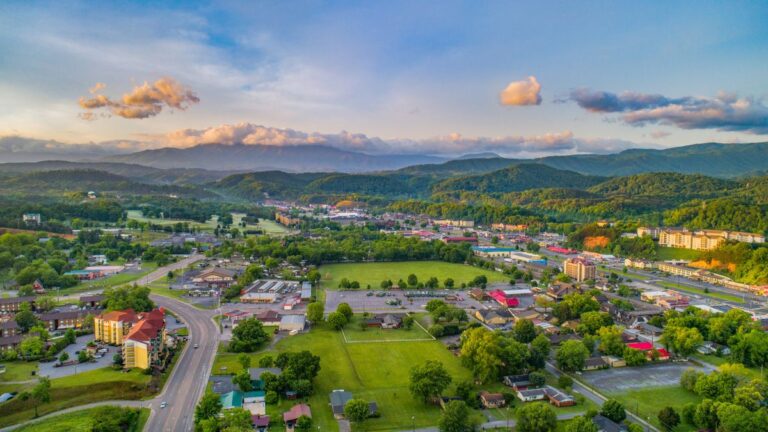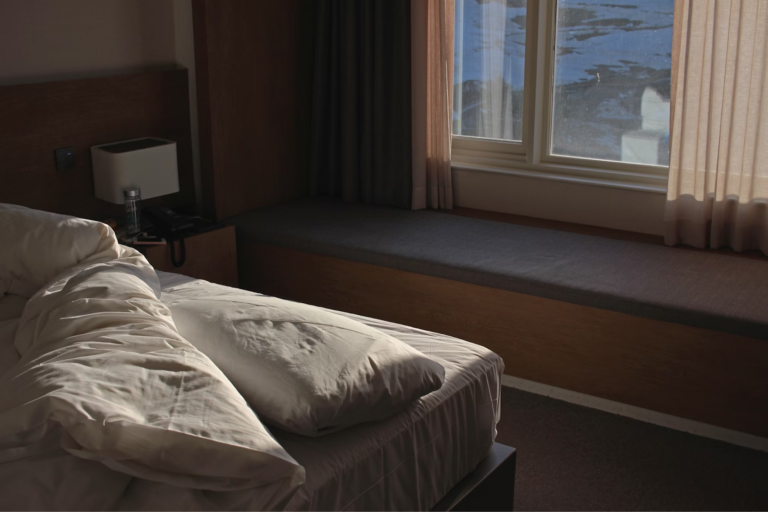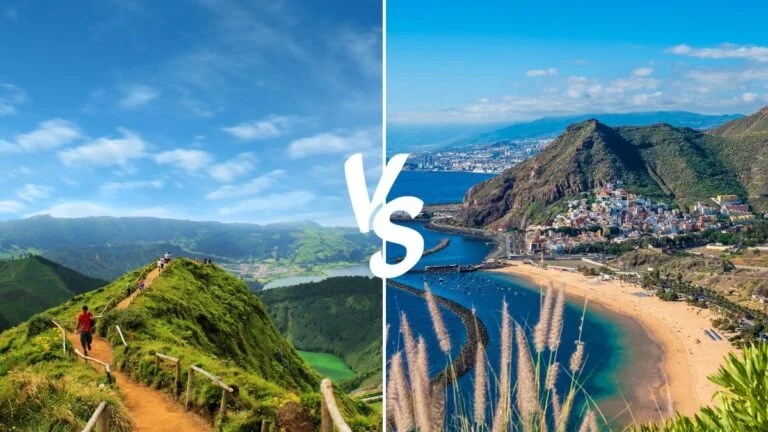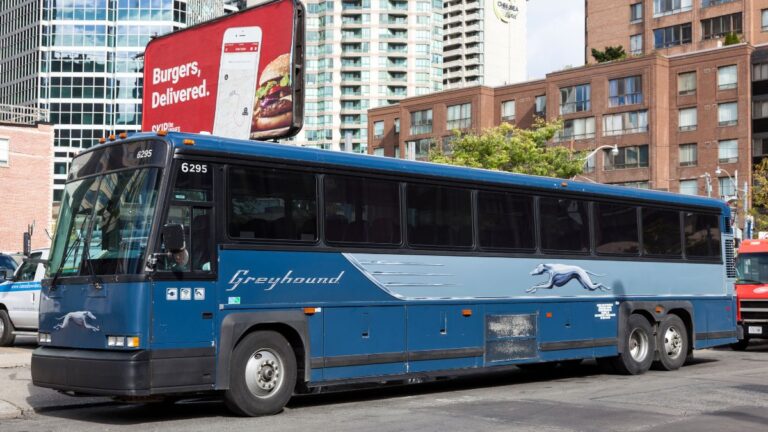Dubrovnik Vs. Split: A Guide to Choosing Your Perfect Croatian Getaway
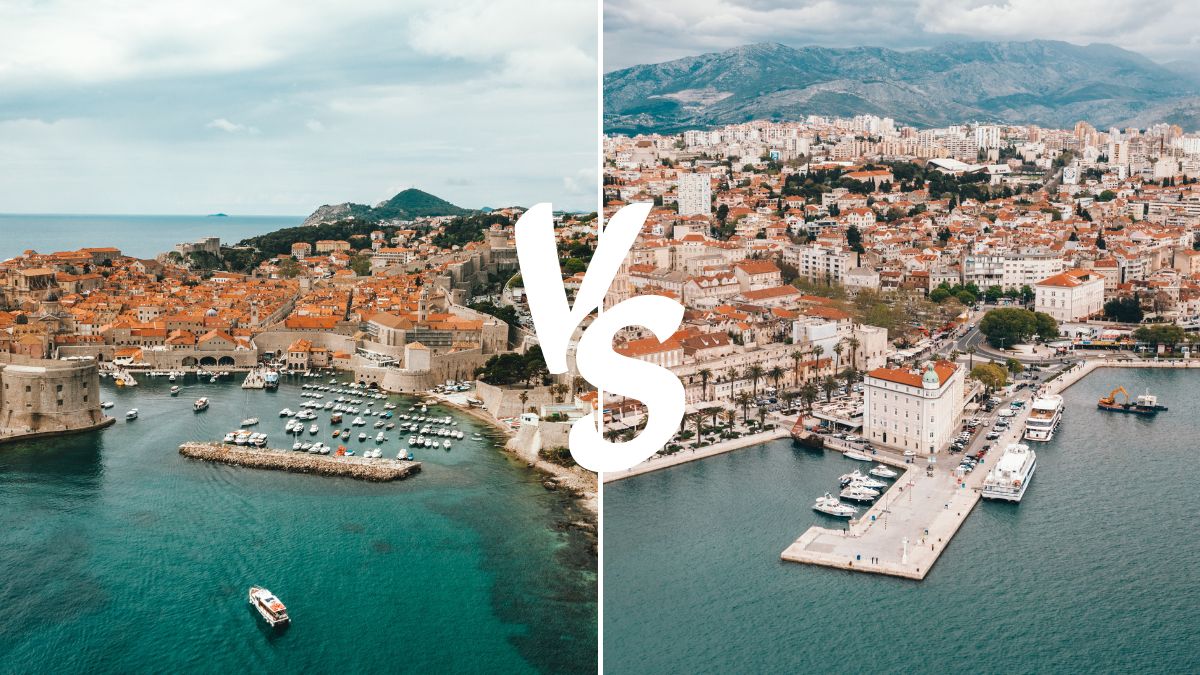
As participants in Amazon Associates and other programs, we earn from qualifying purchases. This comes at no additional cost to you. For more details, see our Affiliate Disclosure.
In the heart of the Adriatic Sea lies the gem that is Croatia, a country known for its vibrant cities, breathtaking landscapes, and rich history. Among its many treasures are Dubrovnik and Split, two cities that have captivated the hearts of tourists worldwide. They may share the same stunning coastline, but each city possesses a unique allure that distinctly sets them apart. How do you choose between the majestic walls of Dubrovnik and the Roman ruins in Split for your dream Croatian getaway?
In this comprehensive guide, we delve into the heart and soul of these two riveting cities, comparing their characteristics and offerings to help you decide which best matches your vacation preferences.
Overview: Dubrovnik vs Split
Dubrovnik and Split are two of the most visited destinations in Croatia, each with a compelling blend of history, culture, and natural beauty. However, their atmospheres, attractions, and experiences are distinct, making for different kinds of holidays.
Dubrovnik, renowned for its impressive medieval walls and well-preserved Old Town, has earned its title as the ‘Pearl of the Adriatic.’ The city is steeped in a rich historical tapestry that dates back to the 7th century, giving it an allure that’s hard to resist. The narrow, cobblestone streets lined with baroque buildings are a sight to behold, while the views of the azure sea from the city walls are truly breathtaking. Dubrovnik’s fame has grown exponentially due to its association with the popular television series, “Game of Thrones,” which used the city as one of its primary filming locations.
Split, on the other hand, is the second-largest city in Croatia and is widely known for the grand Diocletian’s Palace, an ancient palace built for the Roman Emperor Diocletian at the turn of the fourth century. This city presents a fantastic blend of ancient and modern, with the palace now home to an array of shops, cafes, and apartments. The bustling Riva promenade is a hotspot for locals and tourists alike, offering a lively, urban vibe. Split is also a strategic point for exploring nearby islands such as Brač, Hvar, and Vis.
Both cities boast pristine beaches, fascinating museums, exquisite dining experiences, and lively nightlife. However, the choice between Dubrovnik and Split often boils down to your personal preferences. For a more romantic and historical trip, Dubrovnik could be the choice for you. If you prefer a balance of antiquity and modern city life with opportunities for island-hopping, then Split could be your ideal destination.
The Historical Tapestry: Unraveling the Past in Dubrovnik and Split
The rich, colorful past of both Dubrovnik and Split is unmistakably evident in their stunning architecture and ancient sites, providing a historical panorama that adds depth and intrigue to any visit.
Dubrovnik’s Historical Highlights
Dubrovnik’s history is firmly etched in its imposing city walls and charming Old Town, both of which are UNESCO World Heritage Sites. Walking along the ancient city walls, which served as formidable fortifications in medieval times, offers a journey back in time and stunning views of the city and the Adriatic Sea.
The Old Town, with its labyrinthine streets and picturesque squares, is home to a variety of historical sites, including the impressive Rector’s Palace, the grand Sponza Palace, and the oldest functioning pharmacy in Europe located in the Friar’s Monastery.
Stroll down Stradun, the main pedestrian street, to appreciate the city’s well-preserved medieval, renaissance, and baroque architecture. A visit to Lovrijenac Fortress and Fort Bokar, integral parts of Dubrovnik’s defense in the past, is also worthwhile for history buffs.
Split’s Historical Highlights
Split’s historical essence is perfectly encapsulated in the Diocletian’s Palace, another UNESCO World Heritage Site. The ancient palace is more like a small city, with a warren of narrow alleys filled with shops, restaurants, and residential apartments. Touring the palace and its cellars offers insight into Roman architecture and the history of the emperor who sought to retire in this paradise.
The city’s old town, located within and around the palace, is replete with historical landmarks, including the Cathedral of St. Domnius, originally built as a mausoleum for Diocletian, and the ancient Temple of Jupiter.
The lively Riva promenade, although modern in its appeal, also carries historical significance. It was here that the locals celebrated the liberation from fascist occupation in 1945.
Gastronomic Delights: Comparing the Culinary Scenes
The culinary scene in Croatia is diverse and distinctive, influenced by various cultures over centuries. Both Dubrovnik and Split are culinary havens, with local gastronomy deeply rooted in Mediterranean tradition. However, each city showcases its unique culinary identity, offering visitors an immersive food experience.
Dubrovnik’s Culinary Delights
Dubrovnik’s dining scene combines traditional Croatian cuisine with an upscale touch, reflecting the city’s reputation as a high-end tourist destination. Fresh seafood is a staple, with dishes such as black risotto made from cuttlefish ink and buzara (shellfish cooked in a tomato and white wine broth) being local favorites.
Dubrovnik also boasts several fine dining options where you can enjoy a sophisticated gastronomic experience. Restaurants like Nautika and 360° offer exquisite dishes accompanied by panoramic views of the Adriatic and the city’s fortifications.
And don’t miss out on the local wines. The Konavle region, just south of Dubrovnik, is known for its excellent wine production, particularly Malvasia and Posip white wines.
Split’s Culinary Delights
Split, while still holding to Croatian culinary traditions, offers a more relaxed, everyday dining scene. The city’s markets, like the bustling Pazar and Peskarija, are a testament to the locals’ commitment to fresh produce. Seafood, of course, is a staple, but so are dishes such as ‘pasticada,’ a hearty beef stew, and ‘soparnik,’ a Swiss chard-filled pastry that’s a specialty of the Dalmatian region.
In Split, you can also enjoy ‘konoba’ style dining – local taverns that serve traditional Dalmatian food. These are great places to try dishes like octopus salad, Dalmatian prosciutto (prsut), and various ‘peka’ dishes – meat or seafood meals cooked under a bell-like dome.
Moreover, Split is surrounded by some fantastic wine regions, like the island of Hvar and the Pelješac peninsula, known for their Plavac Mali red wines.
Adventures in Nature: Outdoor Activities in Dubrovnik and Split
Surrounded by the shimmering Adriatic Sea and verdant landscapes, both Dubrovnik and Split are natural playgrounds offering a plethora of outdoor activities for all types of adventurers.
Natural Adventures in Dubrovnik
Dubrovnik’s most iconic outdoor activity is undoubtedly a walk along the ancient city walls. However, beyond the city’s architectural marvels, Dubrovnik is a gateway to various nature escapades. For beach lovers, Banje Beach and St. Jakov Beach provide pristine waters for swimming, snorkeling, and a variety of water sports.
The Elaphiti Islands, a small archipelago northwest of Dubrovnik, offer serene, untouched natural beauty and are perfect for day trips, with opportunities for hiking, swimming, and exploring quaint villages. For a more unique adventure, consider a sea kayaking tour around the city walls and the nearby island of Lokrum.
Dubrovnik’s surrounding hills also provide excellent hiking trails. Mount Srđ, for instance, offers a challenging trek and rewards climbers with breathtaking panoramic views of Dubrovnik and the surrounding islands.
Natural Adventures in Split
Split serves as a strategic base for nature enthusiasts, thanks to its proximity to several national parks and islands. The Marjan Forest Park, often referred to as the ‘lungs of the city,’ is a hill on the peninsula of the city, offering a network of trails, ancient chapels, and stunning views over Split and the Adriatic.
For a day of sun, sea, and sand, the local beach of Bačvice and the more tranquil Kasjuni beach are popular choices.
Island hopping is another highlight when staying in Split. Visit the islands of Hvar, known for its vibrant nightlife and lush lavender fields; Brač, home to the famous Golden Horn beach; or Šolta, with its quaint villages and crystal-clear bays.
The Krka National Park and Plitvice Lakes National Park, famous for their stunning waterfalls and lush biodiversity, are also accessible from Split for day trips.
Cultural Vibrancy: Festivals and Events
Both Dubrovnik and Split are teeming with cultural events and festivals that reflect their rich histories and vibrant local cultures. These events add an extra dimension to your Croatian holiday, allowing you to witness and partake in traditions that have shaped these cities’ identities.
Dubrovnik’s Cultural Events
Dubrovnik’s cultural calendar is packed with events, but one of the highlights is the Dubrovnik Summer Festival held annually from mid-July to late August. The festival showcases local and international performances in music, theater, and dance at various open-air venues around the city, including the city walls and fortresses.
Fans of the “Game of Thrones” series should not miss the Game of Thrones Festival, where enthusiasts can partake in themed tours, cosplay, and other related activities.
The Good Food Festival in October celebrates local gastronomy with a week-long program of culinary events, including workshops, special menus, and wine tastings.
Split’s Cultural Events
Split also hosts an array of cultural events throughout the year. The highlight is undoubtedly the Split Summer Festival held annually in July and August, offering an array of theater, opera, and music performances staged in the atmospheric ambiance of the Diocletian’s Palace and other outdoor venues around the city.
The Festival of Dalmatian Klapa, a celebration of traditional Dalmatian a capella singing, is a unique cultural experience. This event takes place in early July and attracts various ‘klapa’ groups from around Croatia.
In September, Split hosts the Split Film Festival, an international festival of new film, showcasing innovative, experimental, and radical cinematic works from around the world.
Accommodations: A Range of Options for Every Traveler
Whether you’re a budget backpacker or a luxury traveler, both Dubrovnik and Split offer a variety of accommodation options to suit every style, taste, and budget. From historic buildings turned boutique hotels to modern resorts, self-catering apartments, and cozy hostels, there’s something for everyone.
Dubrovnik Accommodation
Dubrovnik is home to some of the most luxurious hotels in Croatia, many of which offer stunning views of the Adriatic Sea. Hotels like Hotel Excelsior and Villa Dubrovnik provide first-class service, upscale amenities, and prime locations near the Old Town.
For mid-range budgets, consider boutique hotels or guesthouses in the city center, offering a blend of comfort, value, and proximity to key attractions.
Budget travelers and backpackers can find several quality hostels in the city. Hostel Angelina Old Town and City Walls Hostel are popular choices due to their excellent locations and friendly atmosphere.
For a more homely stay, consider one of the many apartments available for rent throughout the city. These often offer excellent value, especially for families or groups.
Split Accommodation
Split also offers a range of luxury accommodations, such as the Hotel Park Split, located near the popular Bacvice Beach, or the Marvie Hotel & Health, which also offers wellness facilities.
The city has an array of mid-range options from guesthouses to boutique hotels. Vestibul Palace Hotel, located in the heart of Diocletian’s Palace, offers a unique boutique experience.
Budget travelers have several hostels to choose from, such as the Split Guesthouse & Hostel and the Tchaikovsky Hostel, known for their great locations and sociable environments.
Like Dubrovnik, Split also has a wide variety of apartments and holiday homes available for rent. These provide a great option if you’re looking for more space or self-catering facilities.
Exploring the City: Transportation in Dubrovnik and Split
Both Dubrovnik and Split have well-organized public transportation systems and several options for getting around, depending on your preferences and itinerary.
Getting Around Dubrovnik
Dubrovnik’s Old Town is pedestrian-only, making it easy to explore on foot. The city’s attractions, shops, and restaurants are compact and close together. However, the city is built on a hillside, so expect some steep climbs and steps.
For areas outside the Old Town, the city’s public bus system is efficient and comprehensive. Buses are frequent during the day, with fewer services in the evening. The Dubrovnik Card, available for one, three, or seven days, offers unlimited bus rides and entrance to several city attractions, including the city walls.
Taxis and Uber are widely available in Dubrovnik and provide a convenient alternative to buses, especially if traveling with luggage or in a group. If you’re planning to explore further afield, like the Pelješac Peninsula or Konavle Valley, consider renting a car.
Getting Around Split
Split is also a very walkable city, with the major attractions, including Diocletian’s Palace, Riva Promenade, and Marjan Hill, all within walking distance. The city center is pedestrian-friendly, but do note that some areas have narrow, cobblestone streets.
Public buses run by Promet Split cover the city and its outskirts. Tickets can be purchased at kiosks or directly from the driver. Taxis and Uber are also available in Split and are a practical option for trips outside the city center or for late-night travel.
For island hopping to nearby islands like Hvar, Brač, or Šolta, frequent ferry services are available from Split’s harbor.
Timing Your Visit: When to Go to Dubrovnik vs Split
Choosing the right time to visit Dubrovnik or Split can make a significant difference to your Croatian holiday. Each season brings its unique flavor, making the cities attractive throughout the year, but depending on your preferences, some periods might be more appealing than others.
When to Visit Dubrovnik
Dubrovnik sees the most tourists in the summer months, particularly in July and August, when the weather is at its warmest, the sea is perfect for swimming, and the city is alive with events like the Dubrovnik Summer Festival. However, it’s also the time when the city is most crowded, and prices for accommodations and flights can be higher.
If you prefer a more relaxed pace, consider visiting in the shoulder seasons: late spring (April to June) or early autumn (September to October). The weather is still pleasant, and the city is less crowded, providing a more leisurely exploration of the city’s attractions.
Winter in Dubrovnik can be charming, with mild temperatures and fewer tourists, but some restaurants and attractions may be closed, and swimming is off the table.
When to Visit Split
Much like Dubrovnik, Split is most crowded in July and August. The warm weather is ideal for beach activities and island hopping, and the city vibrates with summer festivals. However, you’ll need to contend with more tourists and higher prices.
The shoulder seasons, late spring and early autumn, are attractive times to visit Split. You can enjoy sightseeing, the outdoor beauty of Marjan Park, and even some beach time, but with fewer crowds and more moderate temperatures.
Winter in Split is mild and a good time to enjoy the city without the usual tourist rush. While you won’t be sunbathing, it’s a lovely time for leisurely exploring Diocletian’s Palace and enjoying the local café culture.
Nightlife: From Serene Evenings to Party Nights
The Croatian cities of Dubrovnik and Split offer varied and vibrant nightlife scenes, catering to those who prefer relaxed evenings under the stars as well as those looking for pulsating party nights.
Nightlife in Dubrovnik
The nightlife in Dubrovnik might not be as raucous as in some other European cities, but it does have a refined charm. Many visitors enjoy a leisurely evening stroll around the Old Town, taking in the spectacular sight of the city walls lit up against the night sky.
For a more sophisticated evening, consider a sunset cocktail at one of the city’s chic cliff-side bars like Buza or Cave Bar More. Wine enthusiasts should consider visiting a local wine bar like D’Vino to sample regional Croatian wines.
If you’re looking for live music, the Troubadour Hard Jazz Café is a popular spot. Meanwhile, Culture Club Revelin, located within a 16th-century fortress, is one of the city’s top destinations for those seeking a nightclub atmosphere.
Nightlife in Split
Split has a vibrant nightlife scene with plenty of options to suit all tastes. Riva, the seafront promenade, is a hub of activity in the evenings, with locals and tourists alike enjoying drinks at sidewalk cafes and bars.
The Varoš neighborhood, with its narrow alleys, houses many small bars offering local beers and wines. To enjoy a drink with a sea view, head to the beach bars along Bačvice Beach, a popular spot for locals.
For club-goers, Split has several choices. Central Club and Club Tropic are amongst the most popular, playing a variety of music and staying open until the early hours.
On a more serene note, summer nights often have live music performances in and around the Diocletian’s Palace, creating a magical atmosphere.
Dubrovnik or Split? Crafting Your Perfect Croatian Journey
Deciding between Dubrovnik and Split is not an easy task as both cities have unique attractions and experiences to offer. Each city provides an enchanting mix of history, culture, gastronomy, natural beauty, and vibrant nightlife, all wrapped up in the stunning backdrop of the Adriatic Sea. Your choice ultimately depends on your travel preferences and what you wish to get out of your Croatian journey.
Dubrovnik might be the ideal choice if you’re drawn to a more romantic, fairytale-like setting with its preserved medieval cityscape. The city is a haven for history buffs and offers high-end experiences, especially in terms of dining. If you’re a fan of “Game of Thrones,” the many filming locations in Dubrovnik might make it an irresistible choice. However, it’s worth noting that the city can get quite crowded during the peak season.
On the other hand, Split provides a more laid-back vibe and a lively city life, where ancient history coexists with modern living. It’s an excellent choice for travelers seeking a balance between cultural exploration and relaxed beach time. Split’s proximity to several islands and national parks also makes it a perfect base for outdoor enthusiasts who want to incorporate day trips into their itinerary.
That said, why choose one when you could experience both? The cities are well-connected, and a multi-city trip would allow you to savor the contrasting experiences that both cities offer. Whether you’re drawn to the allure of Dubrovnik’s old-world charm or the vibrant energy of Split, or a blend of both, your Croatian journey is bound to be a memorable one.

